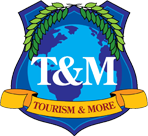Tourism and Tourism Trends: Changes in the way we spend our time.
September 2015
During the last decades, upward mobile people bragged that they were ever more increasingly busy. The “snowed-under” phenomenon was so powerful that many people were ashamed to take a vacation and when vacations were taken they were usually for long weekends. This work-until-you-drop mentality impacted tourism in any number of ways. For example, many women went through an internal battle between their desire to stay home with their young children and their desire, or need to work. The tourism industry gave many of those women who chose to work an opportunity to enter into the workforce not merely at entry-level positions but as major administrators. Locations reacted to the “work-until-you drop mentality by offering shorter and more intense travel experiences, the weekend vacation package was born, and hotels and places of lodging understood that businesspeople and busy executives wanted Internet service and free emails as a means of staying in touch, even when they were away. These never-ending workload mentalities are beginning to change and with the change back to the shorter workweek and more free time new potentials returning to the leisure industry. Here are some of the newest trends in work time management and how tourism professionals can take advantage of the growth of leisure
- Offer vacations and holidays that really allow people to get away from their stressful daily lives. Create tourism professionals need to find ways that allow people to leave their daily grind, get back to nature and at the same time are not so far away that they cannot be found in case of emergency. Although many will seek, solitude an aging population means that grown children will want to be in contact with their families, but at the same time, seek simple back to nature experiences.
- Think rural even if your destination is urban. Even urban centers can create the restful experience. Although people will not want to camp out in major cities’ parks, urban hotels can offer restful spas, psychological relaxation exercises, and classes designed to allow people to get in touch with themselves.
- Office productivity may be tied to leisure time. Over the last few decades, vacations have been viewed as required periods of non-productivity. The face or leisure travel is now changing with more an more office managers realizing that longer hours and less vacations do not translate into higher levels of productivity but rather simply more workplace stress.
- Make exercise fun and less stressful. Once upon a time the expression no pain/no gain dominated the world of exercise. With an ever-aging population and one that is trying to combine exercise with fun, the expression may have lost a great deal of relevance. Tourism centers that find ways to make exercise interactive and fun now have the advantage. For example, rather than just offering an exercise room in some remote part of a hotel, consider having a trainer on duty, interesting music or even a discussion group. Combining exercise for the body and the brain may become not only a new way to win customers but if the person to person interaction is good, these new employees will create loyal customers who return to the same hotel on a regular basis.
- Be creative and make family time will matter more than ever. The newest trends in tourism show people seeking to combine work, leisure and family time. That means that tourism attractions need to think about how they are integrating whole families. Stating you are family friendly is not enough. The same goes for smaller communities that often claim to be family friendly, but in reality offer very little for the vacationing family. Make it easy for families. For example, offer early evening activities, or provide places where lawn chairs can be rented for outdoor concerts. One of the most difficult things for traveling families is to find places to wash and especially to dry clothes. Remember when traveling families need the comforts of home, but rarely have them.
- Be prepared for fewer women with young children in the work force or for changing workforce demographics. Many younger women, who can afford to do so, are choosing again to become stay-at-home moms. This demographic change impacts the tourism industry in a number of ways. These include (1) mothers who are seeking activities to do with their children especially during the summer vacations, (2) a reduced workforce, as tourism leaders often tend to be women, (3) the desire of many women to work part time rather than full time, and (4) the need to be creative and allow people to work from home.
- Provide people with outlets for hobbies. Tourism is more than beaches, museums, and mountains. Although these components are strong visitation magnets, there are many new tourism opportunities to consider. Visitors today are seeking new ways to pursue old hobbies or loves. For example, we are beginning to see a trend of older citizens returning to musical instruments that they once played. This new love of music can be translated into not only senior citizen music camps, but local school orchestras may want to provide musical grandparent-grandchildren experiences. Make a list of your community’s clubs and cultural or athletic organization and then see if they cannot be incorporated into your local tourism product.
- Offer restful alternatives. Tourism is more than doing, it is also the right not to do, to turn away from a non-stop world and learn to relax or slow down. Develop new ways in which your community can provide restful alternatives. Be careful not to make these all or nothing experiences. Instead provide a buffet of ways to relax and to be busy, to do and to do nothing.



